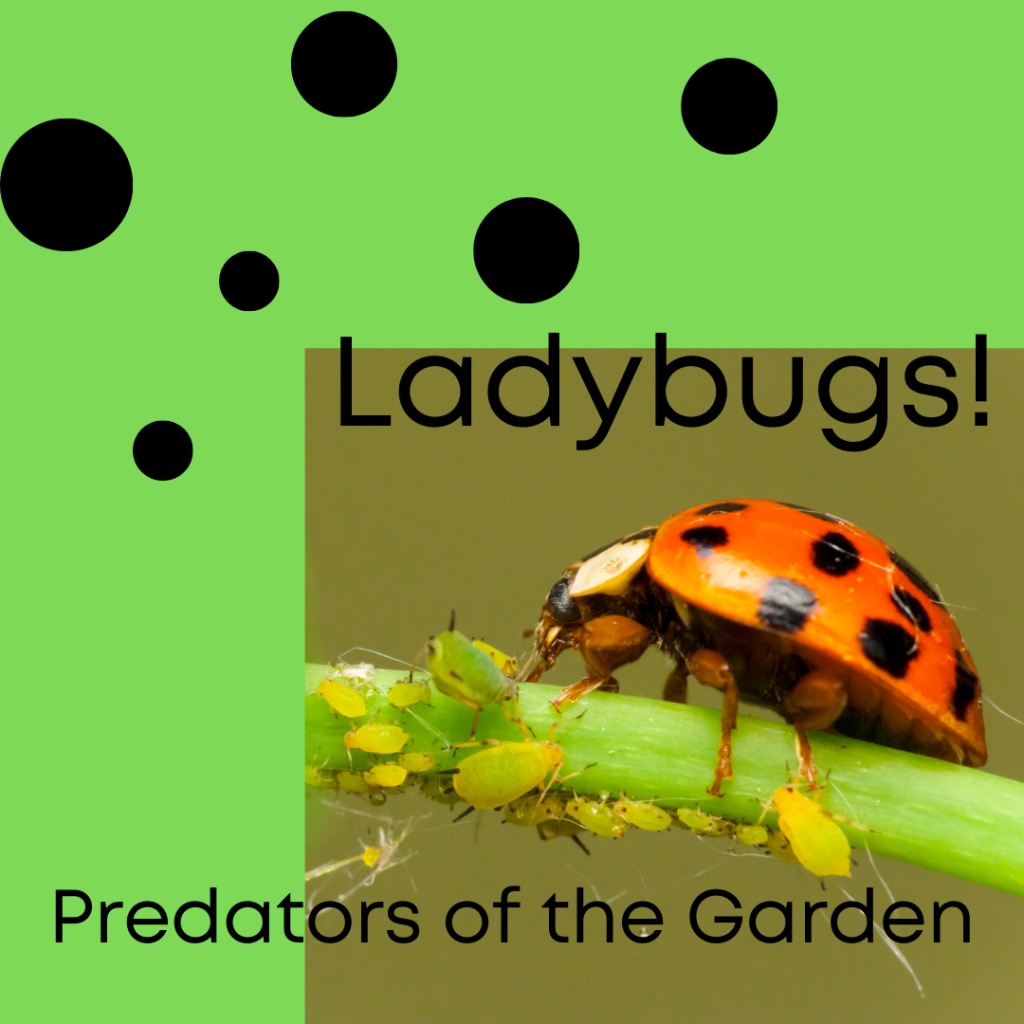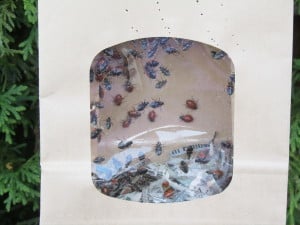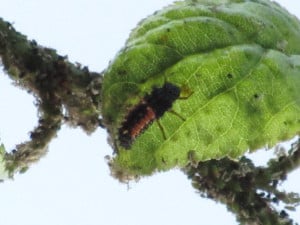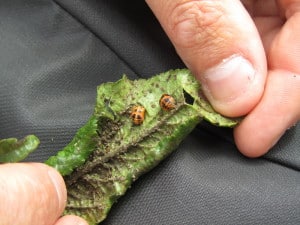Ladybugs – Predators of the Garden
Ladybugs don’t look much like predators of the garden, but you’d be surprised at how voracious they are at eating their favourite food – aphids! Adult ladybugs can eat upwards of 50 aphids a day! I think it’s fair to call them predators with this grand of an appetite.
Aphid Troubles
Aphids are those tiny pesky green bugs that can infest roses, flowers, fruits and vegetable plants. If left to multiply undeterred, aphids will seem to completely envelope a branch or leaf. This is unfortunately usually when you notice them. After a closer look to see what is ailing your poor plant, you’ll see the aphids happily sucking the sweet fluids. At that point you scrunch your nose and say “Eeeww!”, well at least I do.
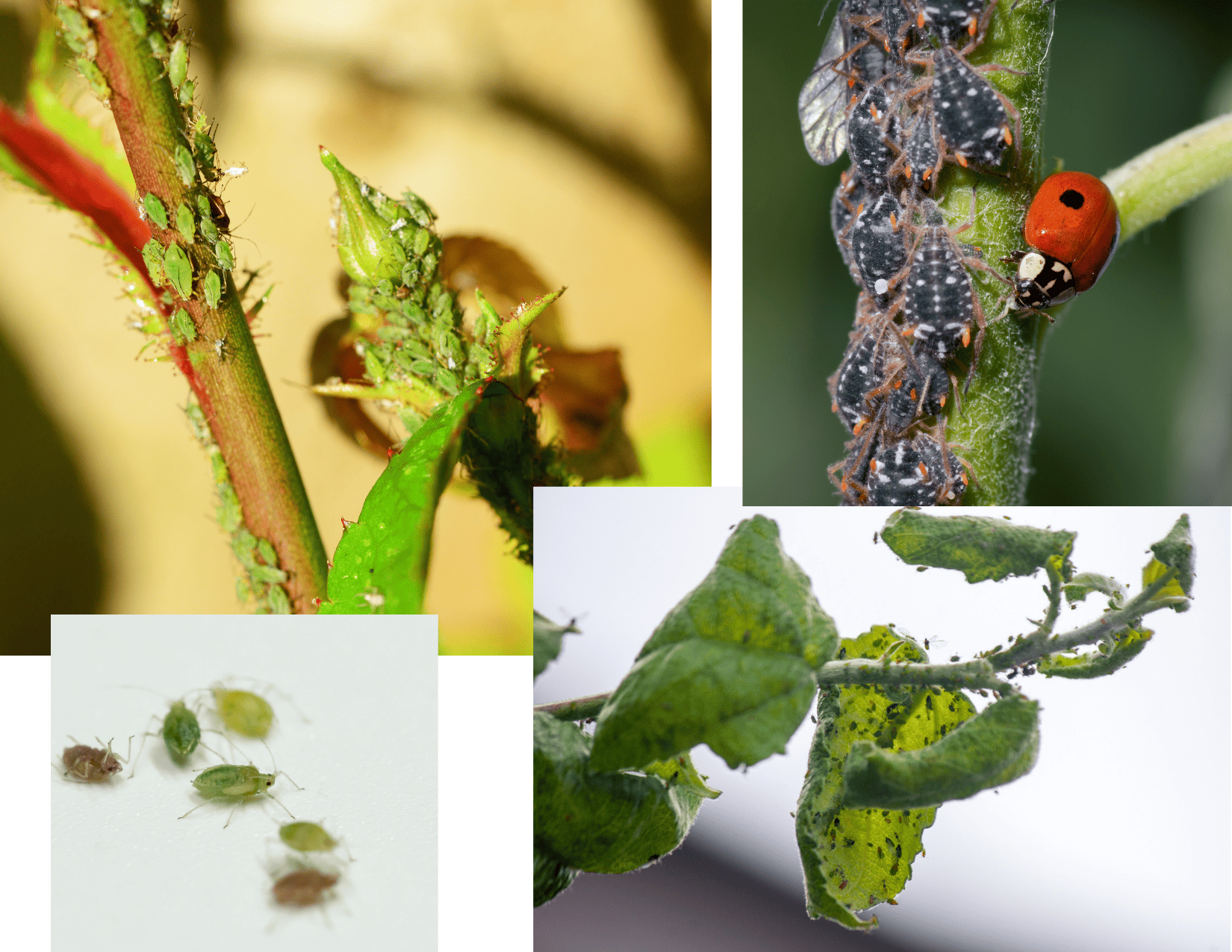
Well there is kind of a fun way to get rid of them that is truly environmentally friendly. Ladybugs have been raised commercially for farmers and gardeners for exactly that reason – to be let loose by the hundreds on your colony of aphids. In fact, this is how some species of aphids came to be introduced to North America at the turn of the century. The Asian Multispotted Ladybug and the 7 Spot Ladybug were both introduced to crops and greenhouses in the United States to try and control the aphids.
Let’s Try Out Ladybug Control
We had a huge aphid problem erupt on our ornamental cherry tree last year. Of course, by the time I examined some of the leaves and realized they were encrusted with aphids, several of the large branches were under attack. This was truly an “Eeeewwww” moment, given the magnitude of the onslaught. It was not just a tomato plant, it was a good portion of a whole tree!!
I remembered the Ladybug trick and paid a visit to my local nursery. Sure enough, I could purchase a little bag full of the hungry little warriors ready to wage war on any aphid within reach.
The bags are kept in the fridge until needed so the Ladybugs remain dormant. Within a minute or so of taking them out of the cold they immediately start roaming around prowling for food.
The aphids here have completely engulfed the branch. An orange and black Ladybug larva can be seen on the leaf.
We even had some Ladybug pupa that we found on some leaves. There were obviously Ladybugs in at least 3 of the 4 lifecycle stages in the bag we got!
How did it work?
The procedure was simple – we simply opened the bag and wedged it amongst some of the tastiest branches and watched as the army marched out in droves. I’m not really sure how many Ladybugs stayed in the tree…we certainly saw them flying around, as well as foraging on various leaves and branches throughout the coming days. Since there were numerous Ladybug larva, the orange and black alligator-like stage of the lifecycle, and a few pupa, I would guess maybe there were some eggs in the bag too. You would think that any animal would not stray too far from their food source, especially when it was so abundant in our poor tree.
We have not yet had the aphid problem return, so it seems that our valiant little warriors did their job. Maybe some eventually decided to “fly away home”, but perhaps they left a few peacekeepers behind to maintain law and order. So far, so good!
If you want to learn more about the different types of ladybugs, head on over to the blog post about How Many Spots Does a Ladybug Have?
Have you tried this trick with your aphid troubles? Leave a comment below!

